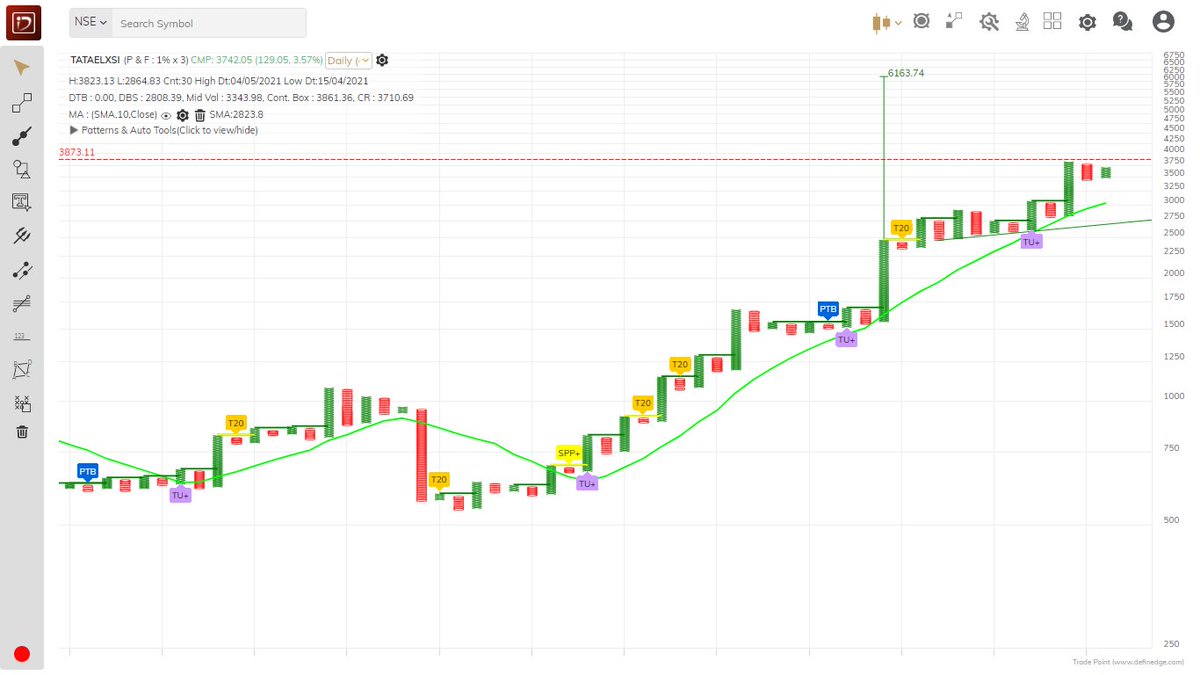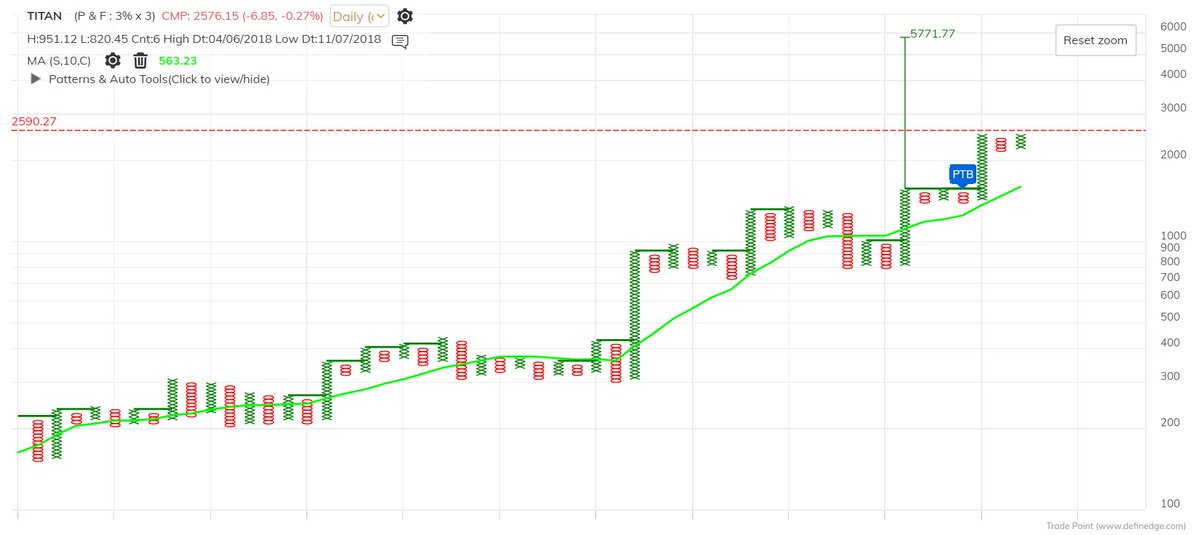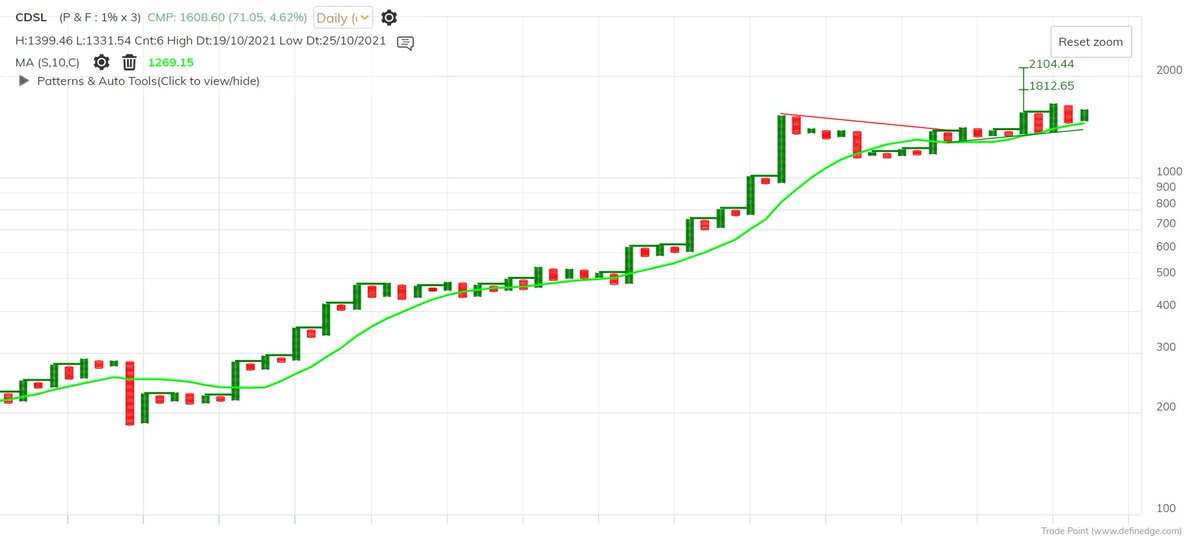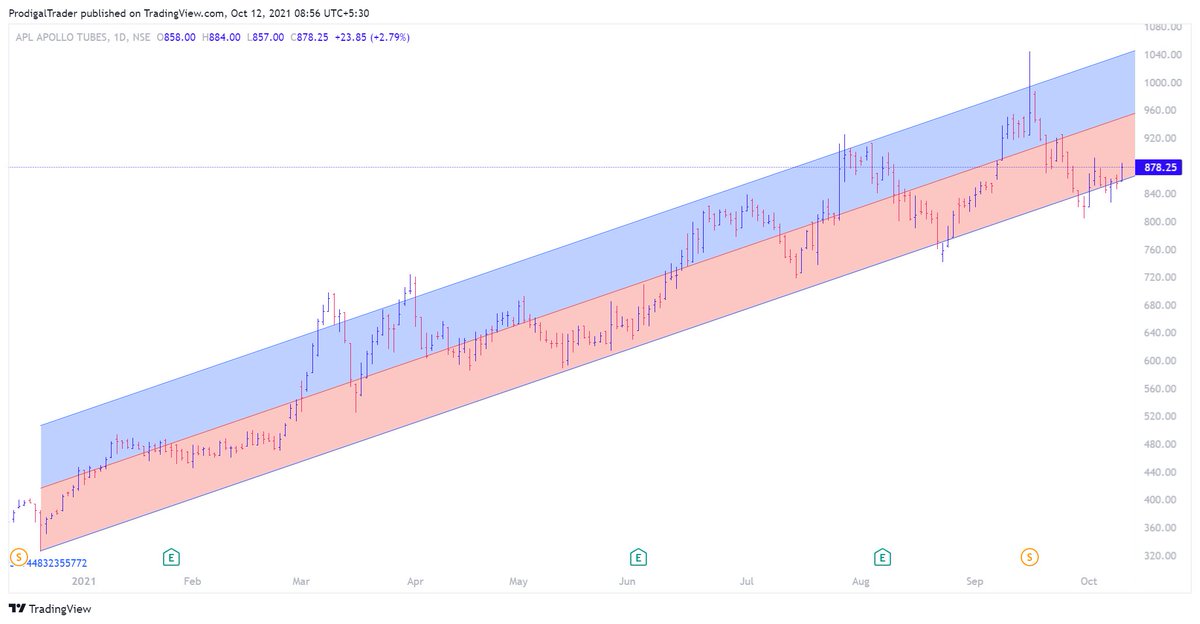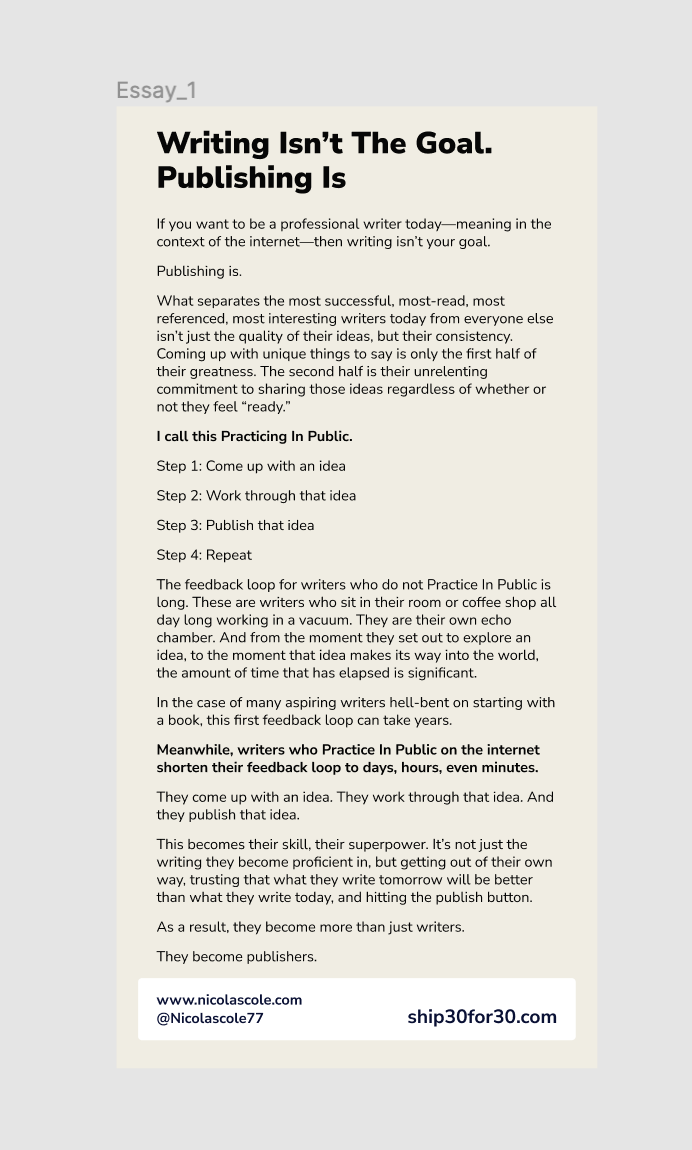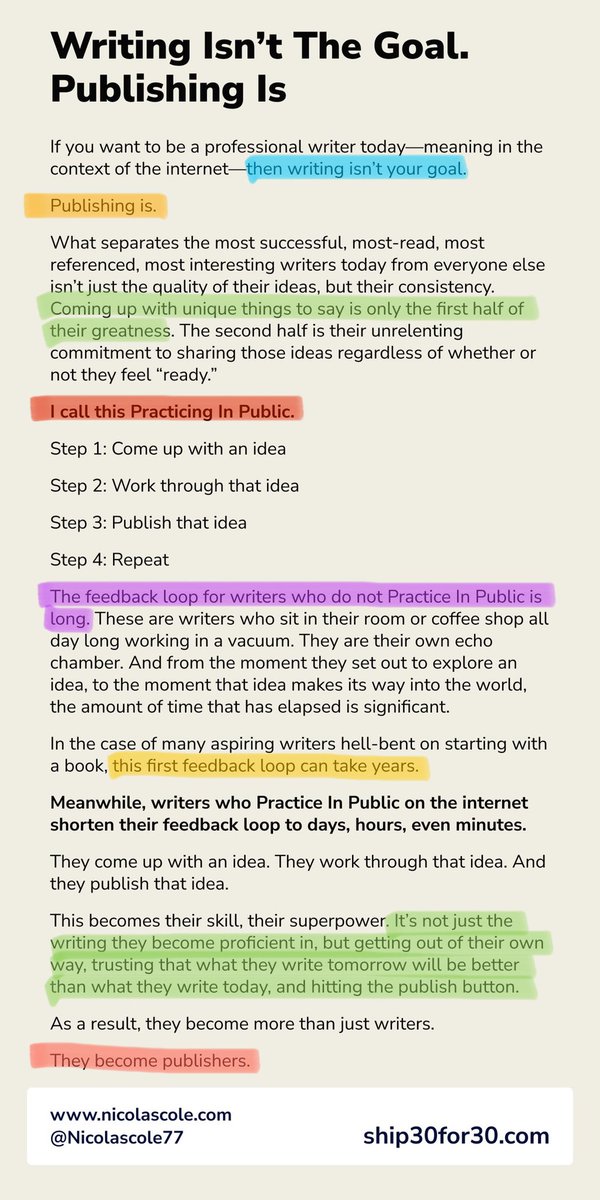APOLLOPIPE
Double Top Buy triggered above 1608.64 daily close on 1% Box Size chart. https://t.co/7jxOpBHGUO

APOLLOPIPE
— Saket Reddy (@saketreddy) July 26, 2021
Double Top Buy & T20 Pattern - Bullish above 1204.85 daily close on 3% Box Size chart. pic.twitter.com/009A5IXJeP
More from Saket Reddy
Haters are still hating it, time to pyramid once again!
Double Top Buy, T20 Pattern - Bullish & Super Pattern - Bullish above 625.07 daily close on 1% Box Size chart. https://t.co/EDqa7dAAKn
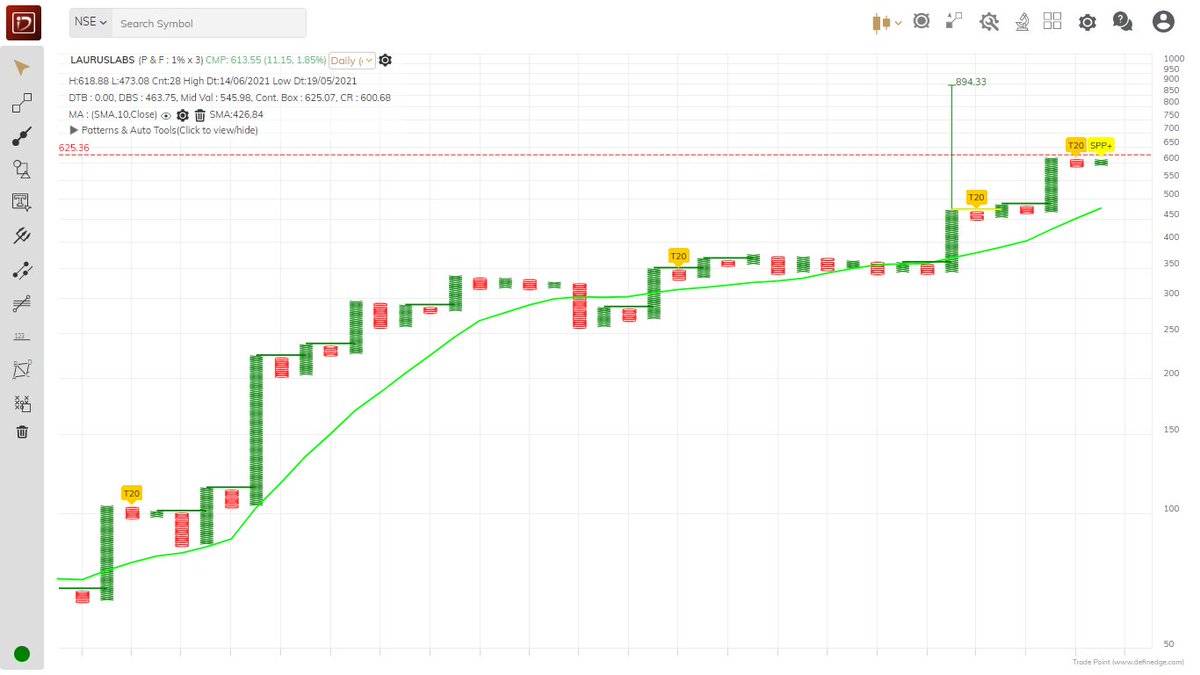
LAURUSLABS
— Saket Reddy (@saketreddy) May 3, 2021
Haters are gonna hate, but IMO, this is the best opportunity to start pyramiding and make it a well sized holding.
A trio of patterns coming together, has one of the highest success rate!
Double Top Buy, T20 Pattern - Bullish & Super pattern - Bullish above 477.81! https://t.co/SqzkTyb9wx pic.twitter.com/hTj7mfAOqy
More from Aplapollo
Apollo Pipes was highly requested company after we released Prince Pipes analysis.
Hope this matches the expectation of the community. 🙏
Another Superb Blog by @badola_arjun . This time on Apollo Pipes \U0001f3d7\ufe0f\U0001f3d7\ufe0f
— Intrinsic Compounding (@soicfinance) September 8, 2021
This completes our PVC/CPVC pipes industry analysis. Done with Astral,Prince and Apollo \U0001f600
Link to read\U0001f517: https://t.co/Ib40q9Fg3g pic.twitter.com/TlN1Urgp01
You May Also Like
As a dean of a major academic institution, I could not have said this. But I will now. Requiring such statements in applications for appointments and promotions is an affront to academic freedom, and diminishes the true value of diversity, equity of inclusion by trivializing it. https://t.co/NfcI5VLODi
— Jeffrey Flier (@jflier) November 10, 2018
We know that elite institutions like the one Flier was in (partial) charge of rely on irrelevant status markers like private school education, whiteness, legacy, and ability to charm an old white guy at an interview.
Harvard's discriminatory policies are becoming increasingly well known, across the political spectrum (see, e.g., the recent lawsuit on discrimination against East Asian applications.)
It's refreshing to hear a senior administrator admits to personally opposing policies that attempt to remedy these basic flaws. These are flaws that harm his institution's ability to do cutting-edge research and to serve the public.
Harvard is being eclipsed by institutions that have different ideas about how to run a 21st Century institution. Stanford, for one; the UC system; the "public Ivys".


